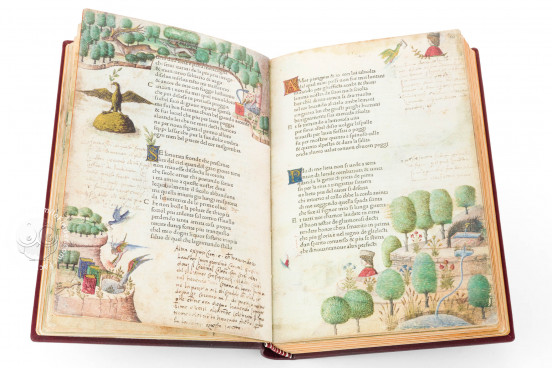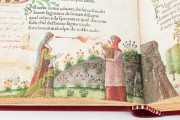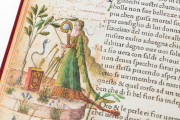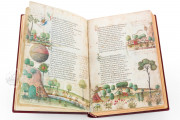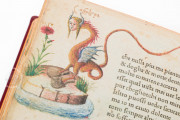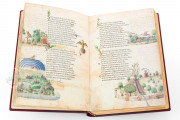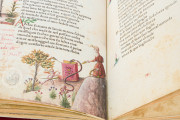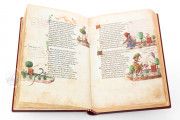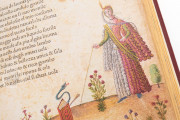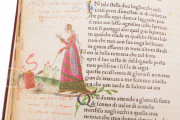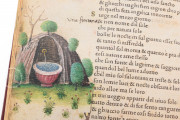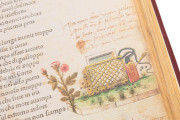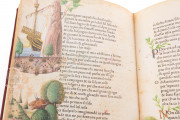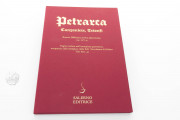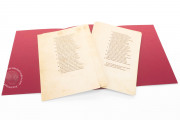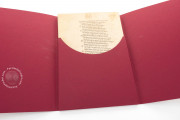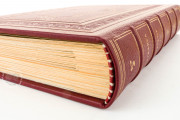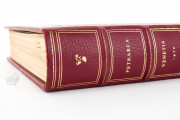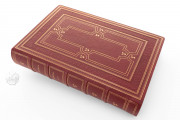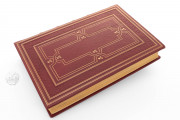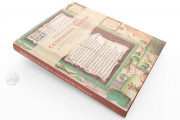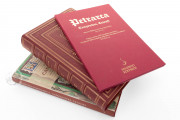The Queriniana Petrarch incunable is one of the most richly decorated examples of Petrarch’s works produced in the 15th century. Taking its name after the place where it is still kept, the work is artistically and culturally significant due to the fact that the artist Antonio Grifo decorated all pages, from the first to the last, without interruptions. Indeed, the Petrarca Queriniano incunable appears to be the only example in which every composition features its own illustration.
The work was produced in Venice in the year 1470, by the typographer Wendelin von Speyer, also known as Vindelino da Spira. The work, hand-decorated by Antonio Grifo – a poet who lived between 15th and 16th century – is written in Italian and contains two of the most significant and popular works by Petrarch, namely the Canzoniere and the Triumphs.
Illustrated Commentary of Petrarca Queriniano Incunable
In terms of iconographic apparatus, the modern and courtly dimension of Petrarch endorses the illustrated commentary, abundant of creative situations, and narrative liveliness – typical of Renaissance – that transform the inner love experience of the poet into a romantically chivalrous tale.
In this scenery – featuring a subtle courtly imagerie – the love skirmish between Laura and Francesco unravels. In the Petrarca Queriniano, he is often represented as a young canon always carrying a book pierced by a dart, with a snake curled around it; the witty metaphor stands for the poet being lovestruck and tempted by the snake of luxury (fol. 15 v., 15 r., 18 r. etc). These scenes betray a general use of symbolism.
The initials are characterized by detailed vegetation, such as intertwined laurel branches green and lively in the life-related rimes, and dried out in the death rimes. Antonio Grifo favors the use of vivid shades of green and red, attempting an anatomically and proportionally correct representation of bodies, typical of Renaissance illumination.
The characters are provided of beautifully depicted detailed features which allow the reader to identify them, almost at first glance. This is especially true for those scenes which are realistically represented by the illustrator, an example being one of Petrarch's most famous lines Chiare fresche e dolci acque (fol. 42v.).
These words are translated into image with the depiction of the ever-present Laura (Petrarch's love) as a fair-haired naked woman immersing in the river Sorga, as a tree pours flowers on the bathing lady (the reader would not have struggled to understand the illustration).
An Unknown Commissioner of the Aragon Family
There is no certainty yet about the identity of the commissioner, referred to in the text as quell’Alma Minerva e Altissima Madonna. Speculative guesses have been put forward, such as Isabella of Aragon, niece of Ferdinand I, king of Naples, or Eleonora of Aragon, king’s Ferdinand daughter, however, it is beyond question that the work never reached its destination.
The work belonged to Giulio Antonio (1660-1737) and Paolo Gagliardi (1675-1742), whose library was donated to the congregation of St. Filippo Neri, near the area of Brescia, and in 1797 was moved in the Biblioteca Queriniana where the Petrarca Queriniano incunable is still kept.
We have 1 facsimile edition of the manuscript "Queriniana Petrarch": Petrarca Queriniano facsimile edition, published by Salerno Editrice, 2016
Request Info / Price

